HRM Report: HRM in Iceland Ltd and Arcadia Group Analysis
VerifiedAdded on 2020/10/22
|17
|3222
|477
Report
AI Summary
This report provides an in-depth analysis of Human Resource Management (HRM) within organizations, focusing on Iceland Ltd and Arcadia Group. It explores various HRM policies, including regulatory policies, absence leave policies, paid time off policies, and policies for smooth work operations. The report also examines HRM practices such as interviewing processes, employee screening, integration strategies, and compensation planning. It discusses high-commitment HRM and contrasts Hard HRM with Soft HRM approaches. Furthermore, the report investigates the external forces impacting HRM, including government regulations, economic conditions, technological advancements, social and cultural environments, and workforce demographics. It details the functions of HRM in recruitment and development, highlighting Ulrich's Model and the roles of HR professionals. The report also covers the responsibilities and challenges faced by line managers within the HRM department, offering a comprehensive overview of HRM strategies and their practical applications.
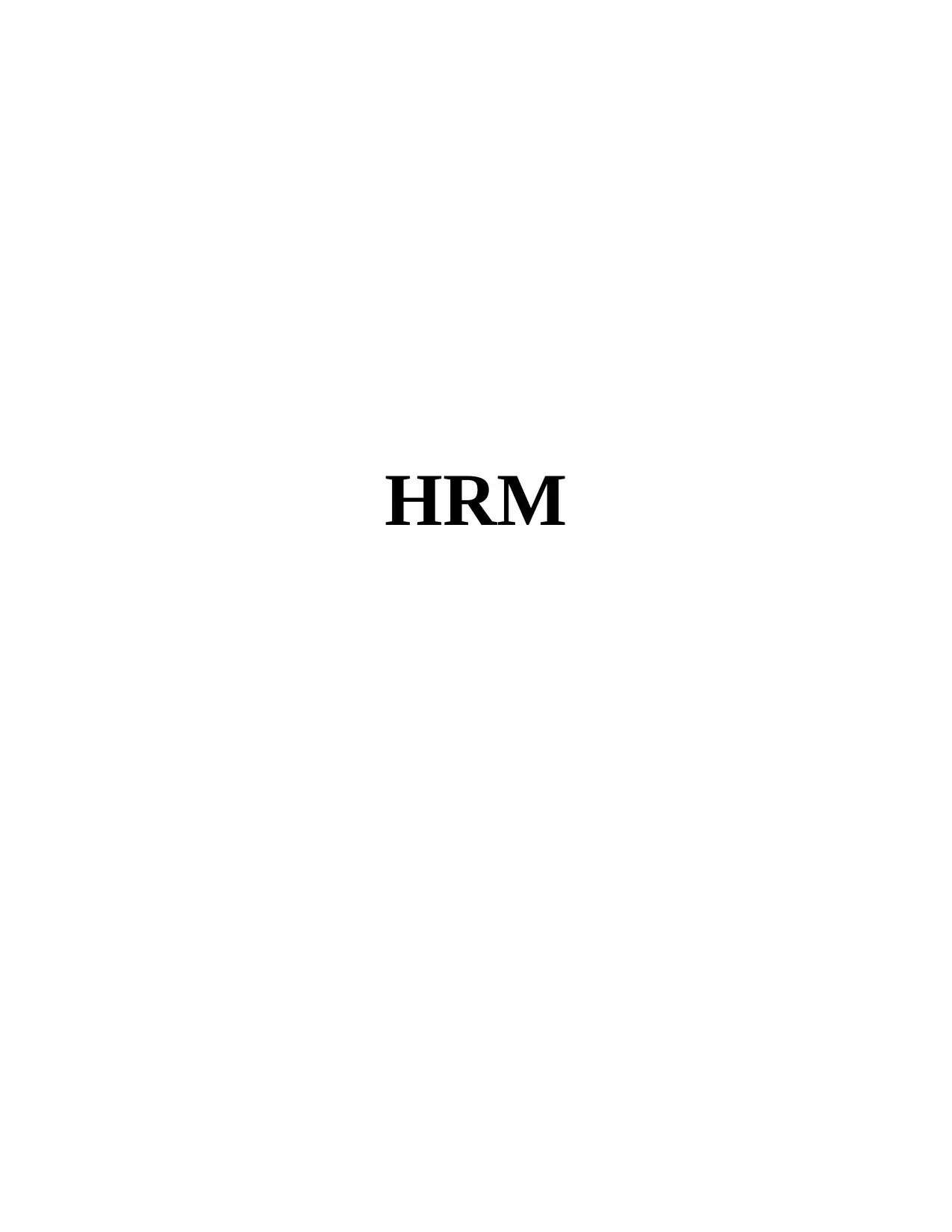
HRM
Paraphrase This Document
Need a fresh take? Get an instant paraphrase of this document with our AI Paraphraser
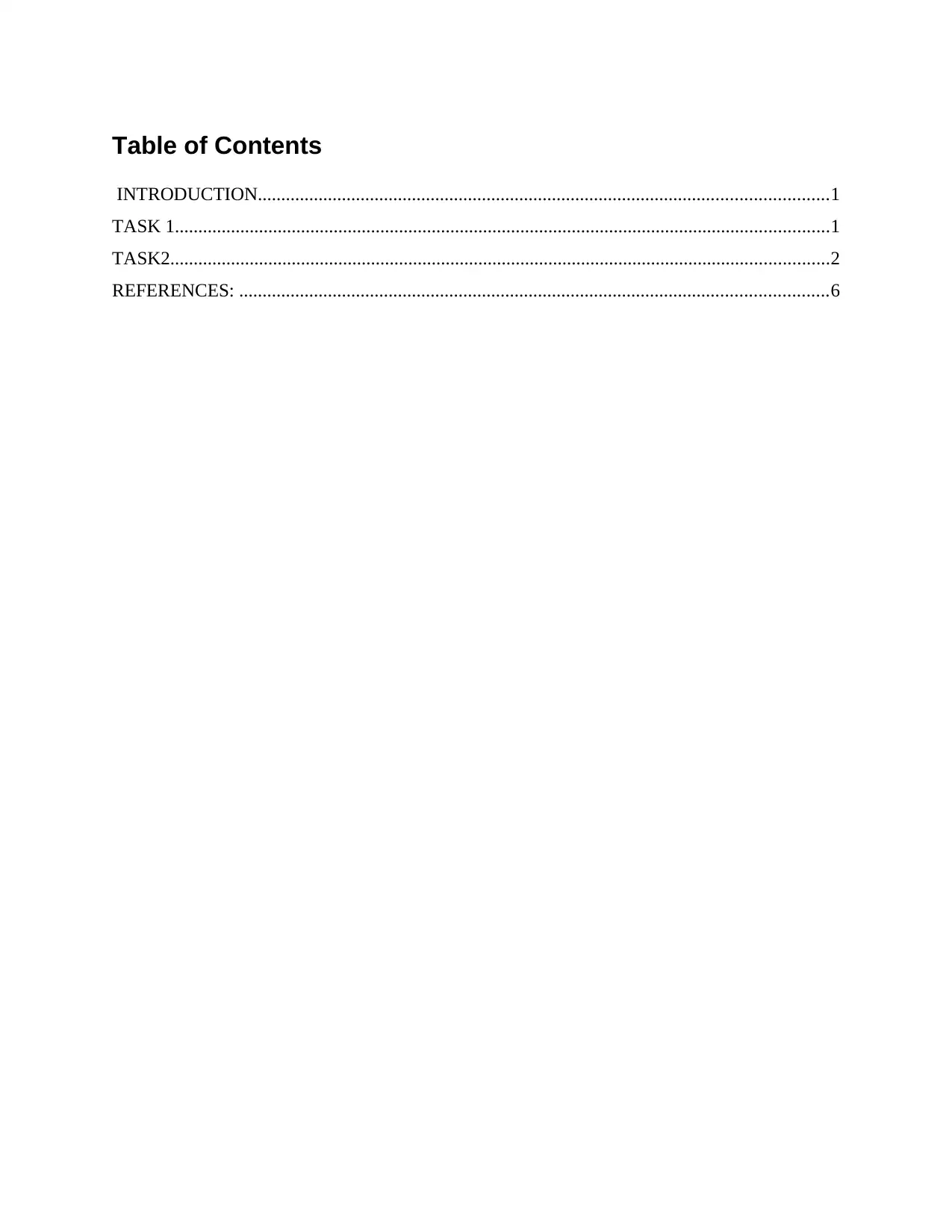
Table of Contents
INTRODUCTION..........................................................................................................................1
TASK 1............................................................................................................................................1
TASK2.............................................................................................................................................2
REFERENCES: ..............................................................................................................................6
INTRODUCTION..........................................................................................................................1
TASK 1............................................................................................................................................1
TASK2.............................................................................................................................................2
REFERENCES: ..............................................................................................................................6
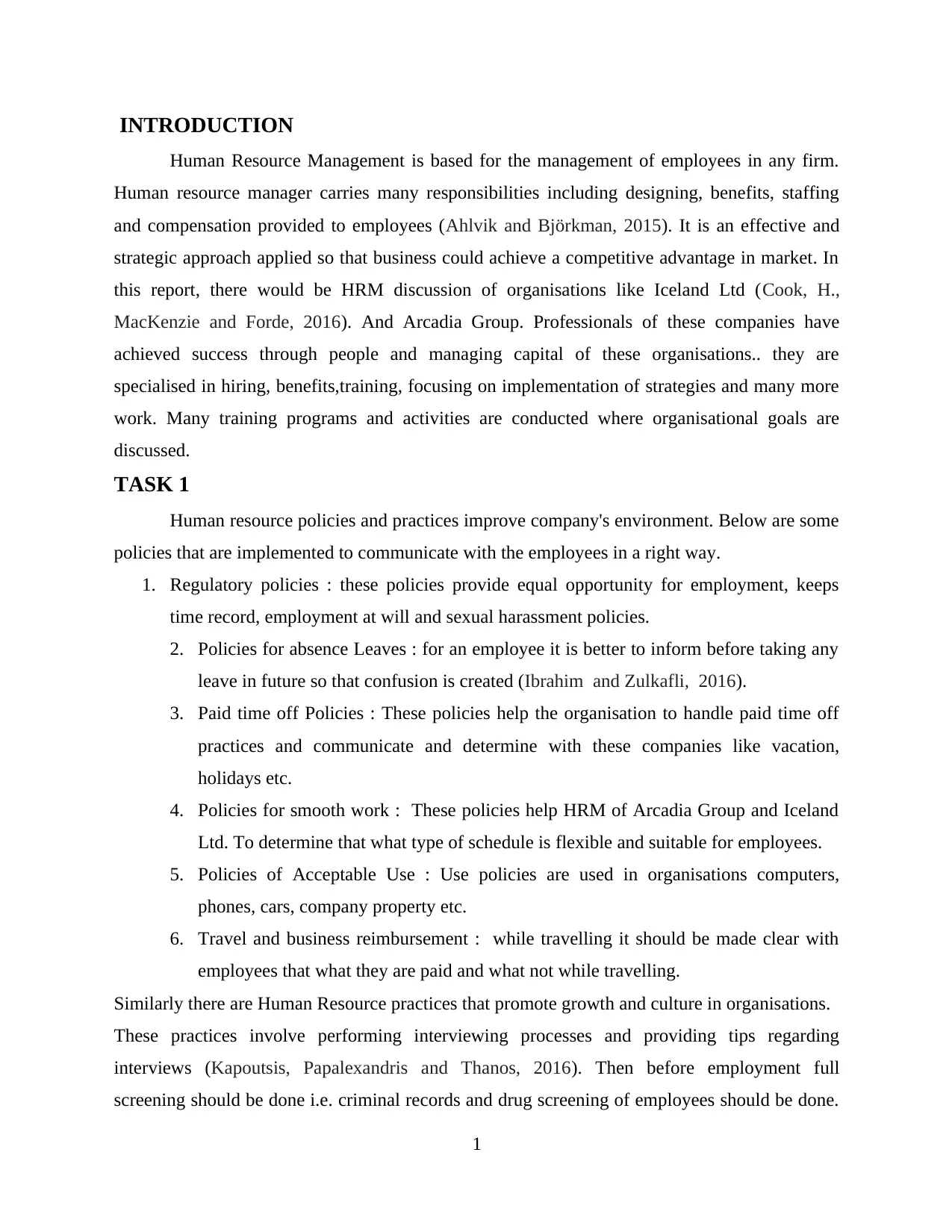
INTRODUCTION
Human Resource Management is based for the management of employees in any firm.
Human resource manager carries many responsibilities including designing, benefits, staffing
and compensation provided to employees (Ahlvik and Björkman, 2015). It is an effective and
strategic approach applied so that business could achieve a competitive advantage in market. In
this report, there would be HRM discussion of organisations like Iceland Ltd (Cook, H.,
MacKenzie and Forde, 2016). And Arcadia Group. Professionals of these companies have
achieved success through people and managing capital of these organisations.. they are
specialised in hiring, benefits,training, focusing on implementation of strategies and many more
work. Many training programs and activities are conducted where organisational goals are
discussed.
TASK 1
Human resource policies and practices improve company's environment. Below are some
policies that are implemented to communicate with the employees in a right way.
1. Regulatory policies : these policies provide equal opportunity for employment, keeps
time record, employment at will and sexual harassment policies.
2. Policies for absence Leaves : for an employee it is better to inform before taking any
leave in future so that confusion is created (Ibrahim and Zulkafli, 2016).
3. Paid time off Policies : These policies help the organisation to handle paid time off
practices and communicate and determine with these companies like vacation,
holidays etc.
4. Policies for smooth work : These policies help HRM of Arcadia Group and Iceland
Ltd. To determine that what type of schedule is flexible and suitable for employees.
5. Policies of Acceptable Use : Use policies are used in organisations computers,
phones, cars, company property etc.
6. Travel and business reimbursement : while travelling it should be made clear with
employees that what they are paid and what not while travelling.
Similarly there are Human Resource practices that promote growth and culture in organisations.
These practices involve performing interviewing processes and providing tips regarding
interviews (Kapoutsis, Papalexandris and Thanos, 2016). Then before employment full
screening should be done i.e. criminal records and drug screening of employees should be done.
1
Human Resource Management is based for the management of employees in any firm.
Human resource manager carries many responsibilities including designing, benefits, staffing
and compensation provided to employees (Ahlvik and Björkman, 2015). It is an effective and
strategic approach applied so that business could achieve a competitive advantage in market. In
this report, there would be HRM discussion of organisations like Iceland Ltd (Cook, H.,
MacKenzie and Forde, 2016). And Arcadia Group. Professionals of these companies have
achieved success through people and managing capital of these organisations.. they are
specialised in hiring, benefits,training, focusing on implementation of strategies and many more
work. Many training programs and activities are conducted where organisational goals are
discussed.
TASK 1
Human resource policies and practices improve company's environment. Below are some
policies that are implemented to communicate with the employees in a right way.
1. Regulatory policies : these policies provide equal opportunity for employment, keeps
time record, employment at will and sexual harassment policies.
2. Policies for absence Leaves : for an employee it is better to inform before taking any
leave in future so that confusion is created (Ibrahim and Zulkafli, 2016).
3. Paid time off Policies : These policies help the organisation to handle paid time off
practices and communicate and determine with these companies like vacation,
holidays etc.
4. Policies for smooth work : These policies help HRM of Arcadia Group and Iceland
Ltd. To determine that what type of schedule is flexible and suitable for employees.
5. Policies of Acceptable Use : Use policies are used in organisations computers,
phones, cars, company property etc.
6. Travel and business reimbursement : while travelling it should be made clear with
employees that what they are paid and what not while travelling.
Similarly there are Human Resource practices that promote growth and culture in organisations.
These practices involve performing interviewing processes and providing tips regarding
interviews (Kapoutsis, Papalexandris and Thanos, 2016). Then before employment full
screening should be done i.e. criminal records and drug screening of employees should be done.
1
⊘ This is a preview!⊘
Do you want full access?
Subscribe today to unlock all pages.

Trusted by 1+ million students worldwide
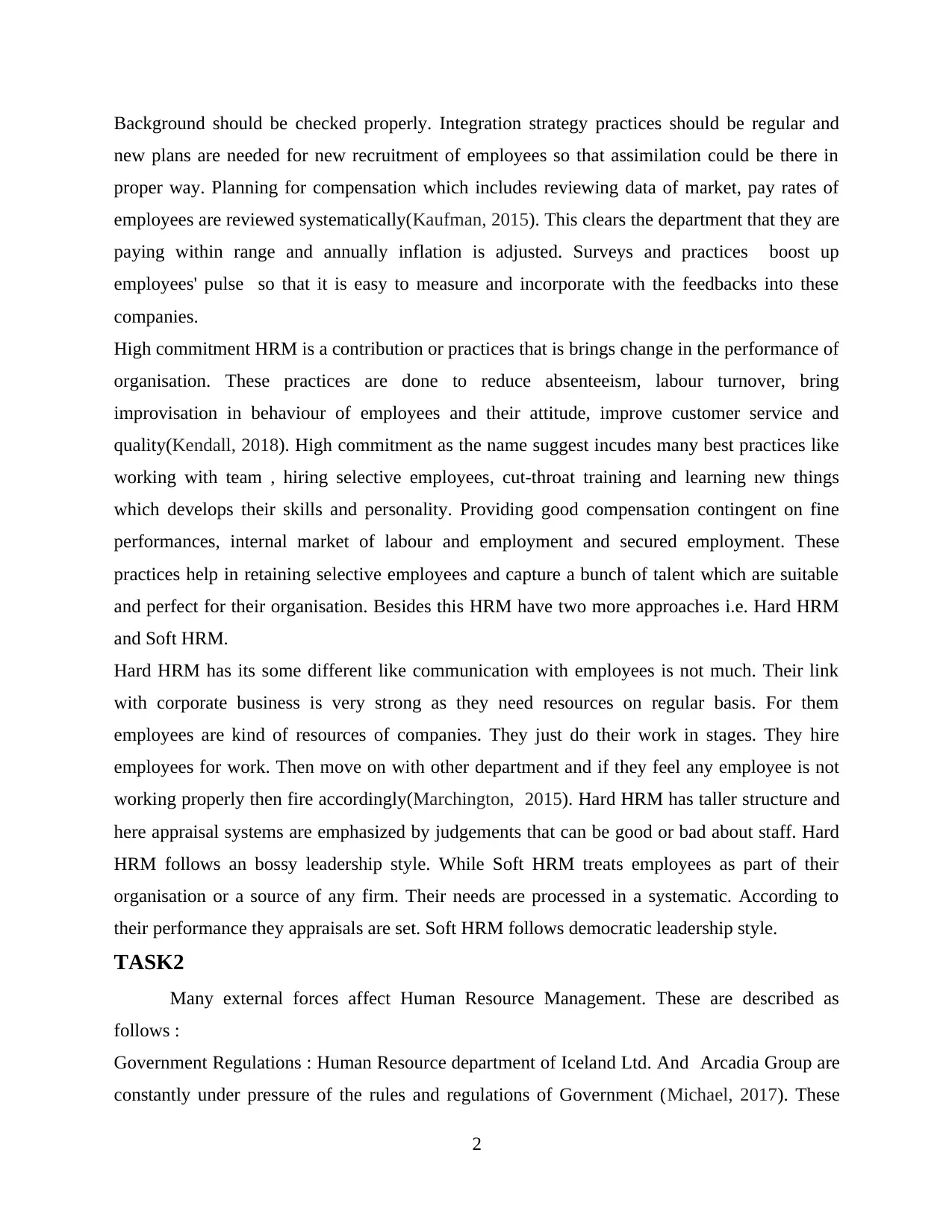
Background should be checked properly. Integration strategy practices should be regular and
new plans are needed for new recruitment of employees so that assimilation could be there in
proper way. Planning for compensation which includes reviewing data of market, pay rates of
employees are reviewed systematically(Kaufman, 2015). This clears the department that they are
paying within range and annually inflation is adjusted. Surveys and practices boost up
employees' pulse so that it is easy to measure and incorporate with the feedbacks into these
companies.
High commitment HRM is a contribution or practices that is brings change in the performance of
organisation. These practices are done to reduce absenteeism, labour turnover, bring
improvisation in behaviour of employees and their attitude, improve customer service and
quality(Kendall, 2018). High commitment as the name suggest incudes many best practices like
working with team , hiring selective employees, cut-throat training and learning new things
which develops their skills and personality. Providing good compensation contingent on fine
performances, internal market of labour and employment and secured employment. These
practices help in retaining selective employees and capture a bunch of talent which are suitable
and perfect for their organisation. Besides this HRM have two more approaches i.e. Hard HRM
and Soft HRM.
Hard HRM has its some different like communication with employees is not much. Their link
with corporate business is very strong as they need resources on regular basis. For them
employees are kind of resources of companies. They just do their work in stages. They hire
employees for work. Then move on with other department and if they feel any employee is not
working properly then fire accordingly(Marchington, 2015). Hard HRM has taller structure and
here appraisal systems are emphasized by judgements that can be good or bad about staff. Hard
HRM follows an bossy leadership style. While Soft HRM treats employees as part of their
organisation or a source of any firm. Their needs are processed in a systematic. According to
their performance they appraisals are set. Soft HRM follows democratic leadership style.
TASK2
Many external forces affect Human Resource Management. These are described as
follows :
Government Regulations : Human Resource department of Iceland Ltd. And Arcadia Group are
constantly under pressure of the rules and regulations of Government (Michael, 2017). These
2
new plans are needed for new recruitment of employees so that assimilation could be there in
proper way. Planning for compensation which includes reviewing data of market, pay rates of
employees are reviewed systematically(Kaufman, 2015). This clears the department that they are
paying within range and annually inflation is adjusted. Surveys and practices boost up
employees' pulse so that it is easy to measure and incorporate with the feedbacks into these
companies.
High commitment HRM is a contribution or practices that is brings change in the performance of
organisation. These practices are done to reduce absenteeism, labour turnover, bring
improvisation in behaviour of employees and their attitude, improve customer service and
quality(Kendall, 2018). High commitment as the name suggest incudes many best practices like
working with team , hiring selective employees, cut-throat training and learning new things
which develops their skills and personality. Providing good compensation contingent on fine
performances, internal market of labour and employment and secured employment. These
practices help in retaining selective employees and capture a bunch of talent which are suitable
and perfect for their organisation. Besides this HRM have two more approaches i.e. Hard HRM
and Soft HRM.
Hard HRM has its some different like communication with employees is not much. Their link
with corporate business is very strong as they need resources on regular basis. For them
employees are kind of resources of companies. They just do their work in stages. They hire
employees for work. Then move on with other department and if they feel any employee is not
working properly then fire accordingly(Marchington, 2015). Hard HRM has taller structure and
here appraisal systems are emphasized by judgements that can be good or bad about staff. Hard
HRM follows an bossy leadership style. While Soft HRM treats employees as part of their
organisation or a source of any firm. Their needs are processed in a systematic. According to
their performance they appraisals are set. Soft HRM follows democratic leadership style.
TASK2
Many external forces affect Human Resource Management. These are described as
follows :
Government Regulations : Human Resource department of Iceland Ltd. And Arcadia Group are
constantly under pressure of the rules and regulations of Government (Michael, 2017). These
2
Paraphrase This Document
Need a fresh take? Get an instant paraphrase of this document with our AI Paraphraser
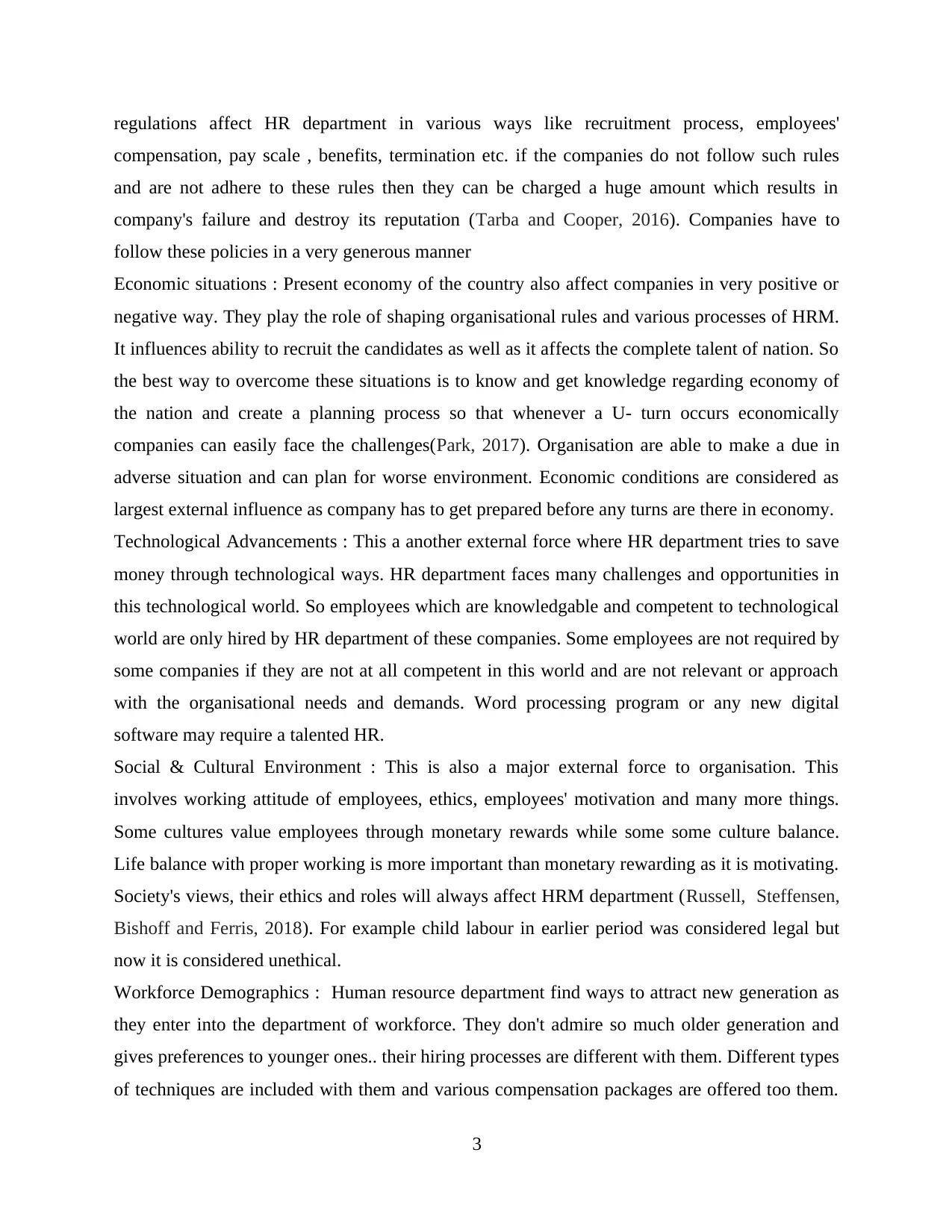
regulations affect HR department in various ways like recruitment process, employees'
compensation, pay scale , benefits, termination etc. if the companies do not follow such rules
and are not adhere to these rules then they can be charged a huge amount which results in
company's failure and destroy its reputation (Tarba and Cooper, 2016). Companies have to
follow these policies in a very generous manner
Economic situations : Present economy of the country also affect companies in very positive or
negative way. They play the role of shaping organisational rules and various processes of HRM.
It influences ability to recruit the candidates as well as it affects the complete talent of nation. So
the best way to overcome these situations is to know and get knowledge regarding economy of
the nation and create a planning process so that whenever a U- turn occurs economically
companies can easily face the challenges(Park, 2017). Organisation are able to make a due in
adverse situation and can plan for worse environment. Economic conditions are considered as
largest external influence as company has to get prepared before any turns are there in economy.
Technological Advancements : This a another external force where HR department tries to save
money through technological ways. HR department faces many challenges and opportunities in
this technological world. So employees which are knowledgable and competent to technological
world are only hired by HR department of these companies. Some employees are not required by
some companies if they are not at all competent in this world and are not relevant or approach
with the organisational needs and demands. Word processing program or any new digital
software may require a talented HR.
Social & Cultural Environment : This is also a major external force to organisation. This
involves working attitude of employees, ethics, employees' motivation and many more things.
Some cultures value employees through monetary rewards while some some culture balance.
Life balance with proper working is more important than monetary rewarding as it is motivating.
Society's views, their ethics and roles will always affect HRM department (Russell, Steffensen,
Bishoff and Ferris, 2018). For example child labour in earlier period was considered legal but
now it is considered unethical.
Workforce Demographics : Human resource department find ways to attract new generation as
they enter into the department of workforce. They don't admire so much older generation and
gives preferences to younger ones.. their hiring processes are different with them. Different types
of techniques are included with them and various compensation packages are offered too them.
3
compensation, pay scale , benefits, termination etc. if the companies do not follow such rules
and are not adhere to these rules then they can be charged a huge amount which results in
company's failure and destroy its reputation (Tarba and Cooper, 2016). Companies have to
follow these policies in a very generous manner
Economic situations : Present economy of the country also affect companies in very positive or
negative way. They play the role of shaping organisational rules and various processes of HRM.
It influences ability to recruit the candidates as well as it affects the complete talent of nation. So
the best way to overcome these situations is to know and get knowledge regarding economy of
the nation and create a planning process so that whenever a U- turn occurs economically
companies can easily face the challenges(Park, 2017). Organisation are able to make a due in
adverse situation and can plan for worse environment. Economic conditions are considered as
largest external influence as company has to get prepared before any turns are there in economy.
Technological Advancements : This a another external force where HR department tries to save
money through technological ways. HR department faces many challenges and opportunities in
this technological world. So employees which are knowledgable and competent to technological
world are only hired by HR department of these companies. Some employees are not required by
some companies if they are not at all competent in this world and are not relevant or approach
with the organisational needs and demands. Word processing program or any new digital
software may require a talented HR.
Social & Cultural Environment : This is also a major external force to organisation. This
involves working attitude of employees, ethics, employees' motivation and many more things.
Some cultures value employees through monetary rewards while some some culture balance.
Life balance with proper working is more important than monetary rewarding as it is motivating.
Society's views, their ethics and roles will always affect HRM department (Russell, Steffensen,
Bishoff and Ferris, 2018). For example child labour in earlier period was considered legal but
now it is considered unethical.
Workforce Demographics : Human resource department find ways to attract new generation as
they enter into the department of workforce. They don't admire so much older generation and
gives preferences to younger ones.. their hiring processes are different with them. Different types
of techniques are included with them and various compensation packages are offered too them.
3
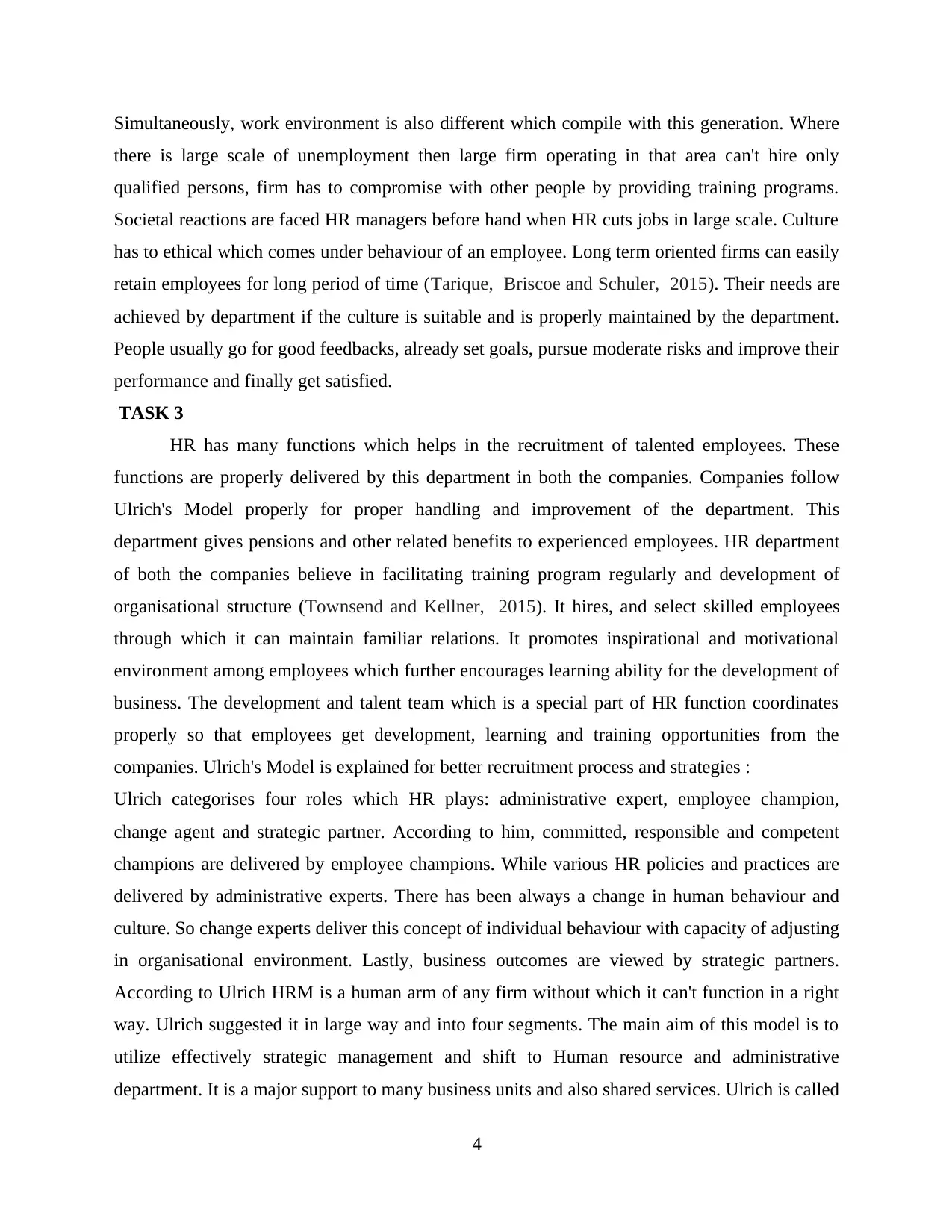
Simultaneously, work environment is also different which compile with this generation. Where
there is large scale of unemployment then large firm operating in that area can't hire only
qualified persons, firm has to compromise with other people by providing training programs.
Societal reactions are faced HR managers before hand when HR cuts jobs in large scale. Culture
has to ethical which comes under behaviour of an employee. Long term oriented firms can easily
retain employees for long period of time (Tarique, Briscoe and Schuler, 2015). Their needs are
achieved by department if the culture is suitable and is properly maintained by the department.
People usually go for good feedbacks, already set goals, pursue moderate risks and improve their
performance and finally get satisfied.
TASK 3
HR has many functions which helps in the recruitment of talented employees. These
functions are properly delivered by this department in both the companies. Companies follow
Ulrich's Model properly for proper handling and improvement of the department. This
department gives pensions and other related benefits to experienced employees. HR department
of both the companies believe in facilitating training program regularly and development of
organisational structure (Townsend and Kellner, 2015). It hires, and select skilled employees
through which it can maintain familiar relations. It promotes inspirational and motivational
environment among employees which further encourages learning ability for the development of
business. The development and talent team which is a special part of HR function coordinates
properly so that employees get development, learning and training opportunities from the
companies. Ulrich's Model is explained for better recruitment process and strategies :
Ulrich categorises four roles which HR plays: administrative expert, employee champion,
change agent and strategic partner. According to him, committed, responsible and competent
champions are delivered by employee champions. While various HR policies and practices are
delivered by administrative experts. There has been always a change in human behaviour and
culture. So change experts deliver this concept of individual behaviour with capacity of adjusting
in organisational environment. Lastly, business outcomes are viewed by strategic partners.
According to Ulrich HRM is a human arm of any firm without which it can't function in a right
way. Ulrich suggested it in large way and into four segments. The main aim of this model is to
utilize effectively strategic management and shift to Human resource and administrative
department. It is a major support to many business units and also shared services. Ulrich is called
4
there is large scale of unemployment then large firm operating in that area can't hire only
qualified persons, firm has to compromise with other people by providing training programs.
Societal reactions are faced HR managers before hand when HR cuts jobs in large scale. Culture
has to ethical which comes under behaviour of an employee. Long term oriented firms can easily
retain employees for long period of time (Tarique, Briscoe and Schuler, 2015). Their needs are
achieved by department if the culture is suitable and is properly maintained by the department.
People usually go for good feedbacks, already set goals, pursue moderate risks and improve their
performance and finally get satisfied.
TASK 3
HR has many functions which helps in the recruitment of talented employees. These
functions are properly delivered by this department in both the companies. Companies follow
Ulrich's Model properly for proper handling and improvement of the department. This
department gives pensions and other related benefits to experienced employees. HR department
of both the companies believe in facilitating training program regularly and development of
organisational structure (Townsend and Kellner, 2015). It hires, and select skilled employees
through which it can maintain familiar relations. It promotes inspirational and motivational
environment among employees which further encourages learning ability for the development of
business. The development and talent team which is a special part of HR function coordinates
properly so that employees get development, learning and training opportunities from the
companies. Ulrich's Model is explained for better recruitment process and strategies :
Ulrich categorises four roles which HR plays: administrative expert, employee champion,
change agent and strategic partner. According to him, committed, responsible and competent
champions are delivered by employee champions. While various HR policies and practices are
delivered by administrative experts. There has been always a change in human behaviour and
culture. So change experts deliver this concept of individual behaviour with capacity of adjusting
in organisational environment. Lastly, business outcomes are viewed by strategic partners.
According to Ulrich HRM is a human arm of any firm without which it can't function in a right
way. Ulrich suggested it in large way and into four segments. The main aim of this model is to
utilize effectively strategic management and shift to Human resource and administrative
department. It is a major support to many business units and also shared services. Ulrich is called
4
⊘ This is a preview!⊘
Do you want full access?
Subscribe today to unlock all pages.

Trusted by 1+ million students worldwide
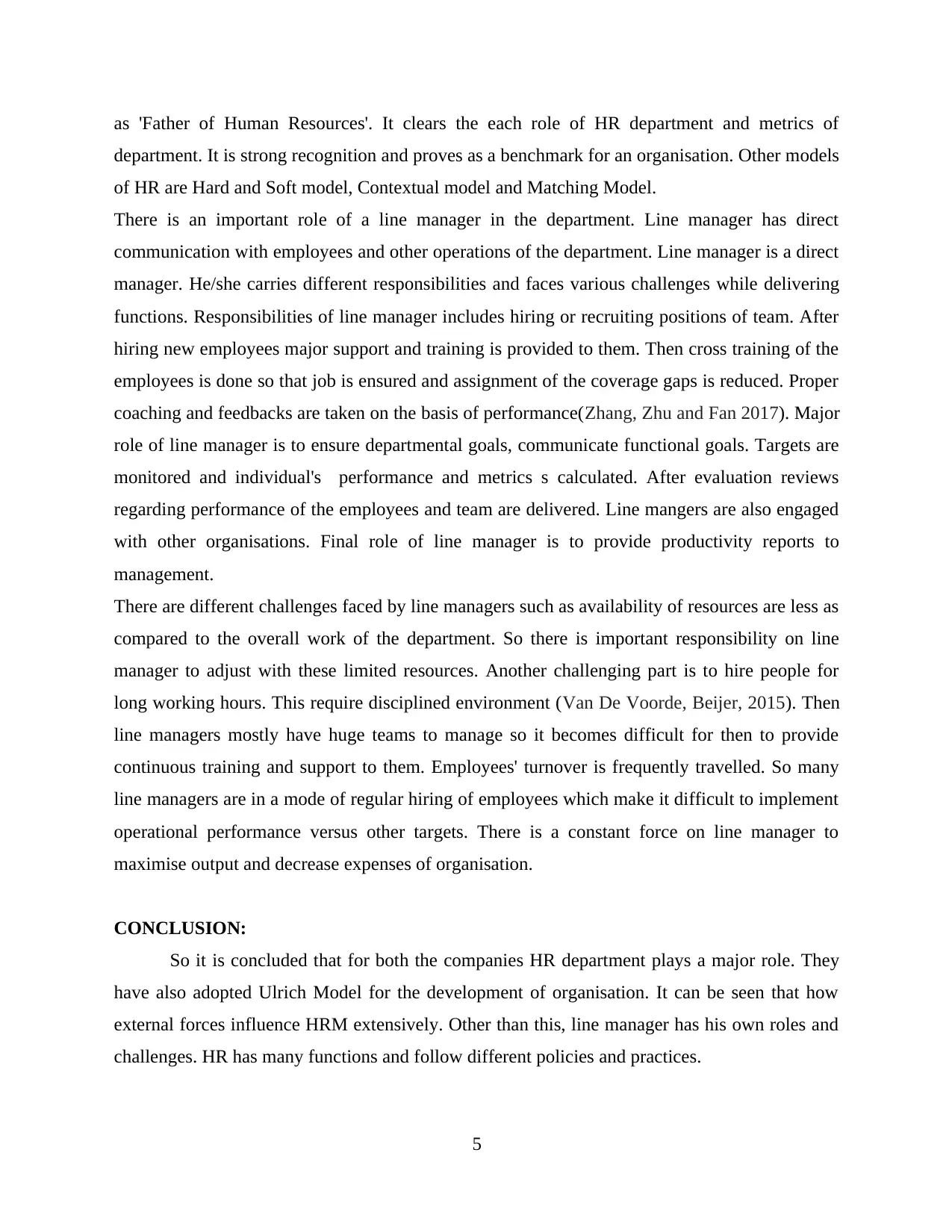
as 'Father of Human Resources'. It clears the each role of HR department and metrics of
department. It is strong recognition and proves as a benchmark for an organisation. Other models
of HR are Hard and Soft model, Contextual model and Matching Model.
There is an important role of a line manager in the department. Line manager has direct
communication with employees and other operations of the department. Line manager is a direct
manager. He/she carries different responsibilities and faces various challenges while delivering
functions. Responsibilities of line manager includes hiring or recruiting positions of team. After
hiring new employees major support and training is provided to them. Then cross training of the
employees is done so that job is ensured and assignment of the coverage gaps is reduced. Proper
coaching and feedbacks are taken on the basis of performance(Zhang, Zhu and Fan 2017). Major
role of line manager is to ensure departmental goals, communicate functional goals. Targets are
monitored and individual's performance and metrics s calculated. After evaluation reviews
regarding performance of the employees and team are delivered. Line mangers are also engaged
with other organisations. Final role of line manager is to provide productivity reports to
management.
There are different challenges faced by line managers such as availability of resources are less as
compared to the overall work of the department. So there is important responsibility on line
manager to adjust with these limited resources. Another challenging part is to hire people for
long working hours. This require disciplined environment (Van De Voorde, Beijer, 2015). Then
line managers mostly have huge teams to manage so it becomes difficult for then to provide
continuous training and support to them. Employees' turnover is frequently travelled. So many
line managers are in a mode of regular hiring of employees which make it difficult to implement
operational performance versus other targets. There is a constant force on line manager to
maximise output and decrease expenses of organisation.
CONCLUSION:
So it is concluded that for both the companies HR department plays a major role. They
have also adopted Ulrich Model for the development of organisation. It can be seen that how
external forces influence HRM extensively. Other than this, line manager has his own roles and
challenges. HR has many functions and follow different policies and practices.
5
department. It is strong recognition and proves as a benchmark for an organisation. Other models
of HR are Hard and Soft model, Contextual model and Matching Model.
There is an important role of a line manager in the department. Line manager has direct
communication with employees and other operations of the department. Line manager is a direct
manager. He/she carries different responsibilities and faces various challenges while delivering
functions. Responsibilities of line manager includes hiring or recruiting positions of team. After
hiring new employees major support and training is provided to them. Then cross training of the
employees is done so that job is ensured and assignment of the coverage gaps is reduced. Proper
coaching and feedbacks are taken on the basis of performance(Zhang, Zhu and Fan 2017). Major
role of line manager is to ensure departmental goals, communicate functional goals. Targets are
monitored and individual's performance and metrics s calculated. After evaluation reviews
regarding performance of the employees and team are delivered. Line mangers are also engaged
with other organisations. Final role of line manager is to provide productivity reports to
management.
There are different challenges faced by line managers such as availability of resources are less as
compared to the overall work of the department. So there is important responsibility on line
manager to adjust with these limited resources. Another challenging part is to hire people for
long working hours. This require disciplined environment (Van De Voorde, Beijer, 2015). Then
line managers mostly have huge teams to manage so it becomes difficult for then to provide
continuous training and support to them. Employees' turnover is frequently travelled. So many
line managers are in a mode of regular hiring of employees which make it difficult to implement
operational performance versus other targets. There is a constant force on line manager to
maximise output and decrease expenses of organisation.
CONCLUSION:
So it is concluded that for both the companies HR department plays a major role. They
have also adopted Ulrich Model for the development of organisation. It can be seen that how
external forces influence HRM extensively. Other than this, line manager has his own roles and
challenges. HR has many functions and follow different policies and practices.
5
Paraphrase This Document
Need a fresh take? Get an instant paraphrase of this document with our AI Paraphraser
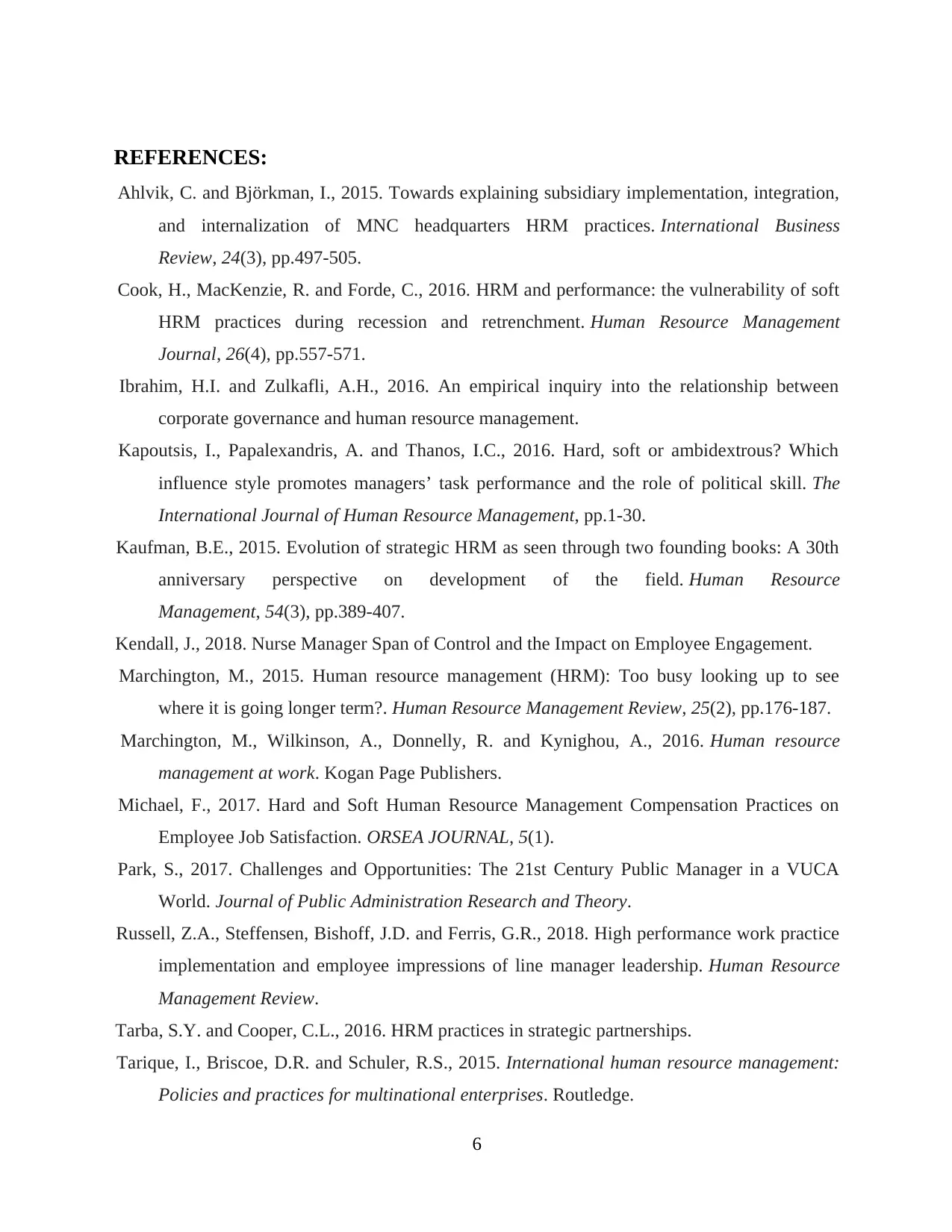
REFERENCES:
Ahlvik, C. and Björkman, I., 2015. Towards explaining subsidiary implementation, integration,
and internalization of MNC headquarters HRM practices. International Business
Review, 24(3), pp.497-505.
Cook, H., MacKenzie, R. and Forde, C., 2016. HRM and performance: the vulnerability of soft
HRM practices during recession and retrenchment. Human Resource Management
Journal, 26(4), pp.557-571.
Ibrahim, H.I. and Zulkafli, A.H., 2016. An empirical inquiry into the relationship between
corporate governance and human resource management.
Kapoutsis, I., Papalexandris, A. and Thanos, I.C., 2016. Hard, soft or ambidextrous? Which
influence style promotes managers’ task performance and the role of political skill. The
International Journal of Human Resource Management, pp.1-30.
Kaufman, B.E., 2015. Evolution of strategic HRM as seen through two founding books: A 30th
anniversary perspective on development of the field. Human Resource
Management, 54(3), pp.389-407.
Kendall, J., 2018. Nurse Manager Span of Control and the Impact on Employee Engagement.
Marchington, M., 2015. Human resource management (HRM): Too busy looking up to see
where it is going longer term?. Human Resource Management Review, 25(2), pp.176-187.
Marchington, M., Wilkinson, A., Donnelly, R. and Kynighou, A., 2016. Human resource
management at work. Kogan Page Publishers.
Michael, F., 2017. Hard and Soft Human Resource Management Compensation Practices on
Employee Job Satisfaction. ORSEA JOURNAL, 5(1).
Park, S., 2017. Challenges and Opportunities: The 21st Century Public Manager in a VUCA
World. Journal of Public Administration Research and Theory.
Russell, Z.A., Steffensen, Bishoff, J.D. and Ferris, G.R., 2018. High performance work practice
implementation and employee impressions of line manager leadership. Human Resource
Management Review.
Tarba, S.Y. and Cooper, C.L., 2016. HRM practices in strategic partnerships.
Tarique, I., Briscoe, D.R. and Schuler, R.S., 2015. International human resource management:
Policies and practices for multinational enterprises. Routledge.
6
Ahlvik, C. and Björkman, I., 2015. Towards explaining subsidiary implementation, integration,
and internalization of MNC headquarters HRM practices. International Business
Review, 24(3), pp.497-505.
Cook, H., MacKenzie, R. and Forde, C., 2016. HRM and performance: the vulnerability of soft
HRM practices during recession and retrenchment. Human Resource Management
Journal, 26(4), pp.557-571.
Ibrahim, H.I. and Zulkafli, A.H., 2016. An empirical inquiry into the relationship between
corporate governance and human resource management.
Kapoutsis, I., Papalexandris, A. and Thanos, I.C., 2016. Hard, soft or ambidextrous? Which
influence style promotes managers’ task performance and the role of political skill. The
International Journal of Human Resource Management, pp.1-30.
Kaufman, B.E., 2015. Evolution of strategic HRM as seen through two founding books: A 30th
anniversary perspective on development of the field. Human Resource
Management, 54(3), pp.389-407.
Kendall, J., 2018. Nurse Manager Span of Control and the Impact on Employee Engagement.
Marchington, M., 2015. Human resource management (HRM): Too busy looking up to see
where it is going longer term?. Human Resource Management Review, 25(2), pp.176-187.
Marchington, M., Wilkinson, A., Donnelly, R. and Kynighou, A., 2016. Human resource
management at work. Kogan Page Publishers.
Michael, F., 2017. Hard and Soft Human Resource Management Compensation Practices on
Employee Job Satisfaction. ORSEA JOURNAL, 5(1).
Park, S., 2017. Challenges and Opportunities: The 21st Century Public Manager in a VUCA
World. Journal of Public Administration Research and Theory.
Russell, Z.A., Steffensen, Bishoff, J.D. and Ferris, G.R., 2018. High performance work practice
implementation and employee impressions of line manager leadership. Human Resource
Management Review.
Tarba, S.Y. and Cooper, C.L., 2016. HRM practices in strategic partnerships.
Tarique, I., Briscoe, D.R. and Schuler, R.S., 2015. International human resource management:
Policies and practices for multinational enterprises. Routledge.
6
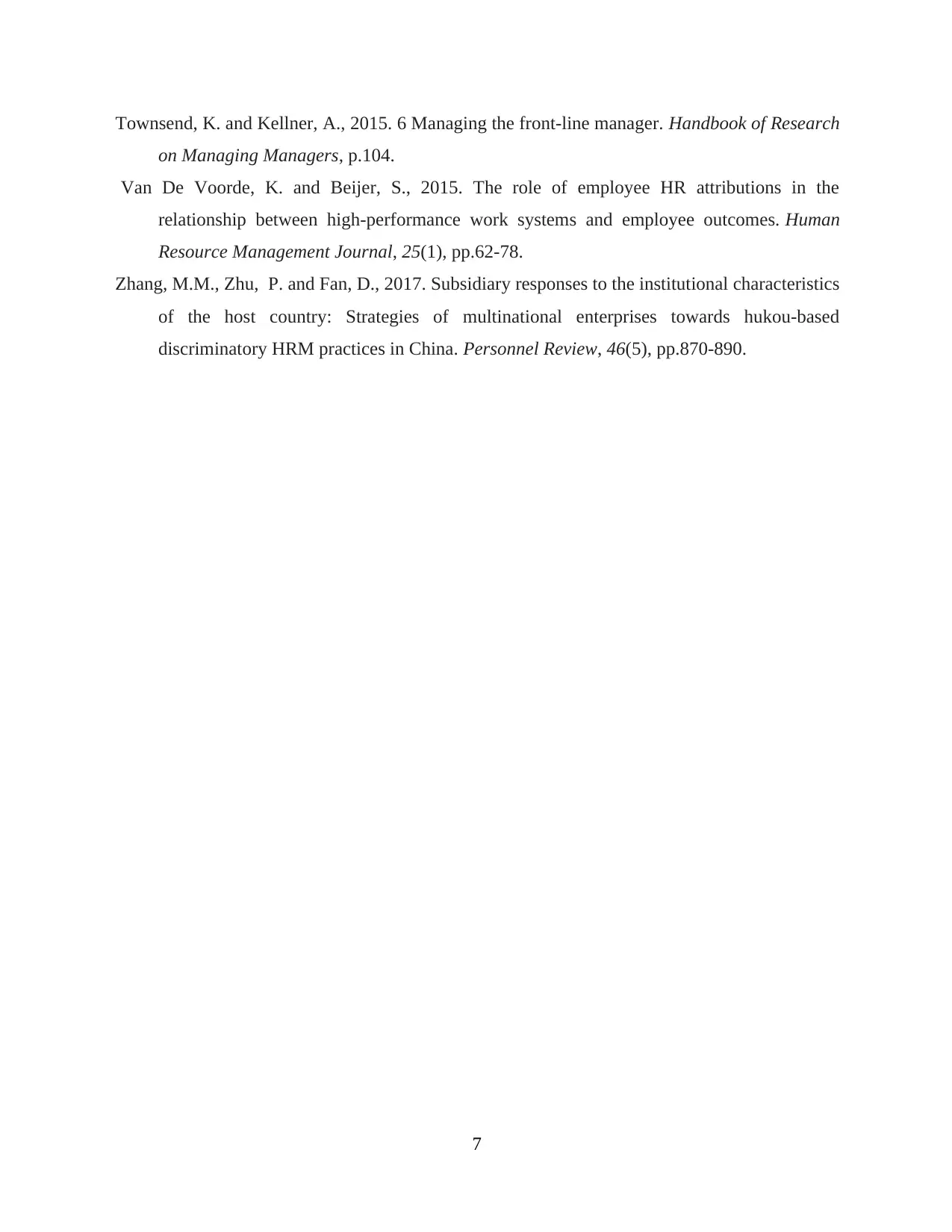
Townsend, K. and Kellner, A., 2015. 6 Managing the front-line manager. Handbook of Research
on Managing Managers, p.104.
Van De Voorde, K. and Beijer, S., 2015. The role of employee HR attributions in the
relationship between high‐performance work systems and employee outcomes. Human
Resource Management Journal, 25(1), pp.62-78.
Zhang, M.M., Zhu, P. and Fan, D., 2017. Subsidiary responses to the institutional characteristics
of the host country: Strategies of multinational enterprises towards hukou-based
discriminatory HRM practices in China. Personnel Review, 46(5), pp.870-890.
7
on Managing Managers, p.104.
Van De Voorde, K. and Beijer, S., 2015. The role of employee HR attributions in the
relationship between high‐performance work systems and employee outcomes. Human
Resource Management Journal, 25(1), pp.62-78.
Zhang, M.M., Zhu, P. and Fan, D., 2017. Subsidiary responses to the institutional characteristics
of the host country: Strategies of multinational enterprises towards hukou-based
discriminatory HRM practices in China. Personnel Review, 46(5), pp.870-890.
7
⊘ This is a preview!⊘
Do you want full access?
Subscribe today to unlock all pages.

Trusted by 1+ million students worldwide
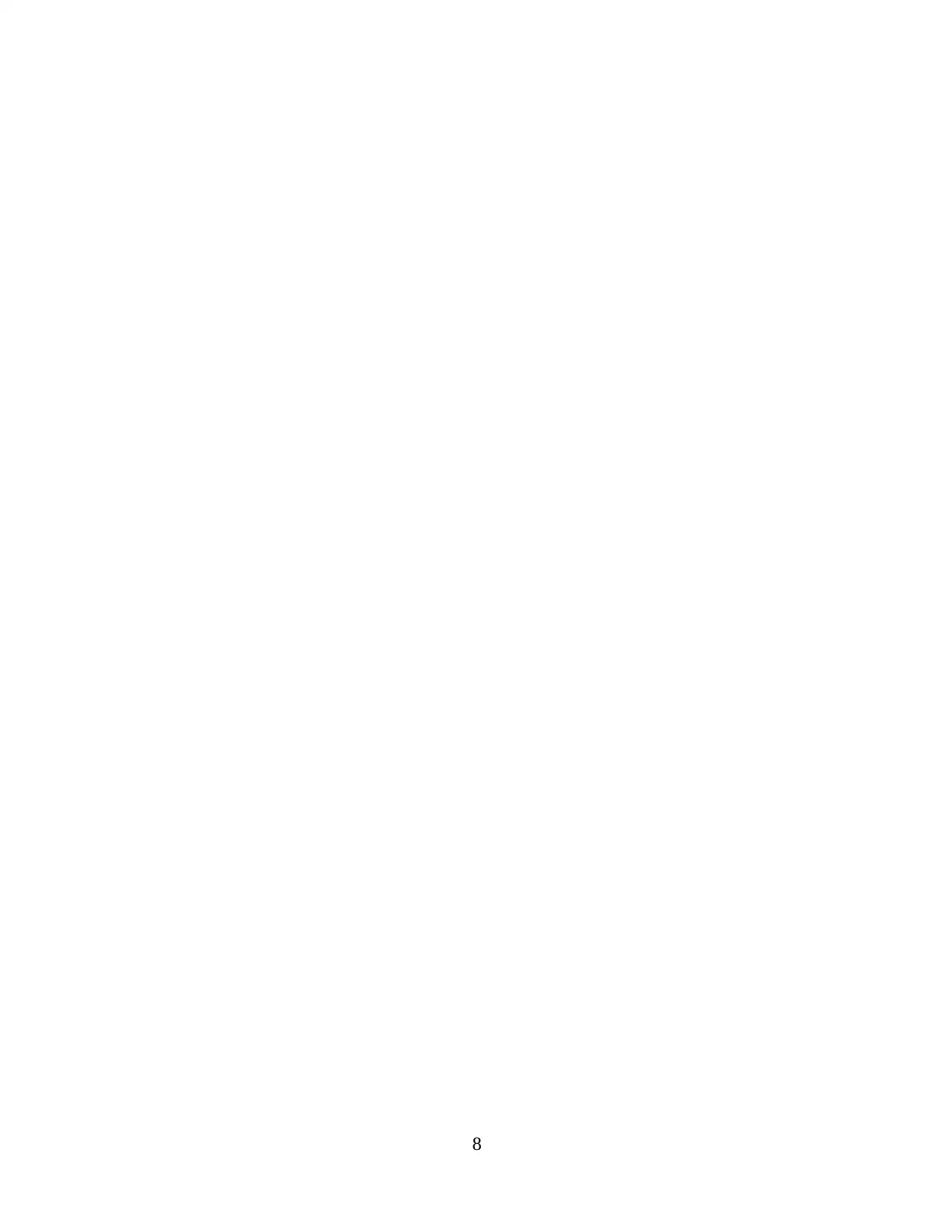
8
Paraphrase This Document
Need a fresh take? Get an instant paraphrase of this document with our AI Paraphraser
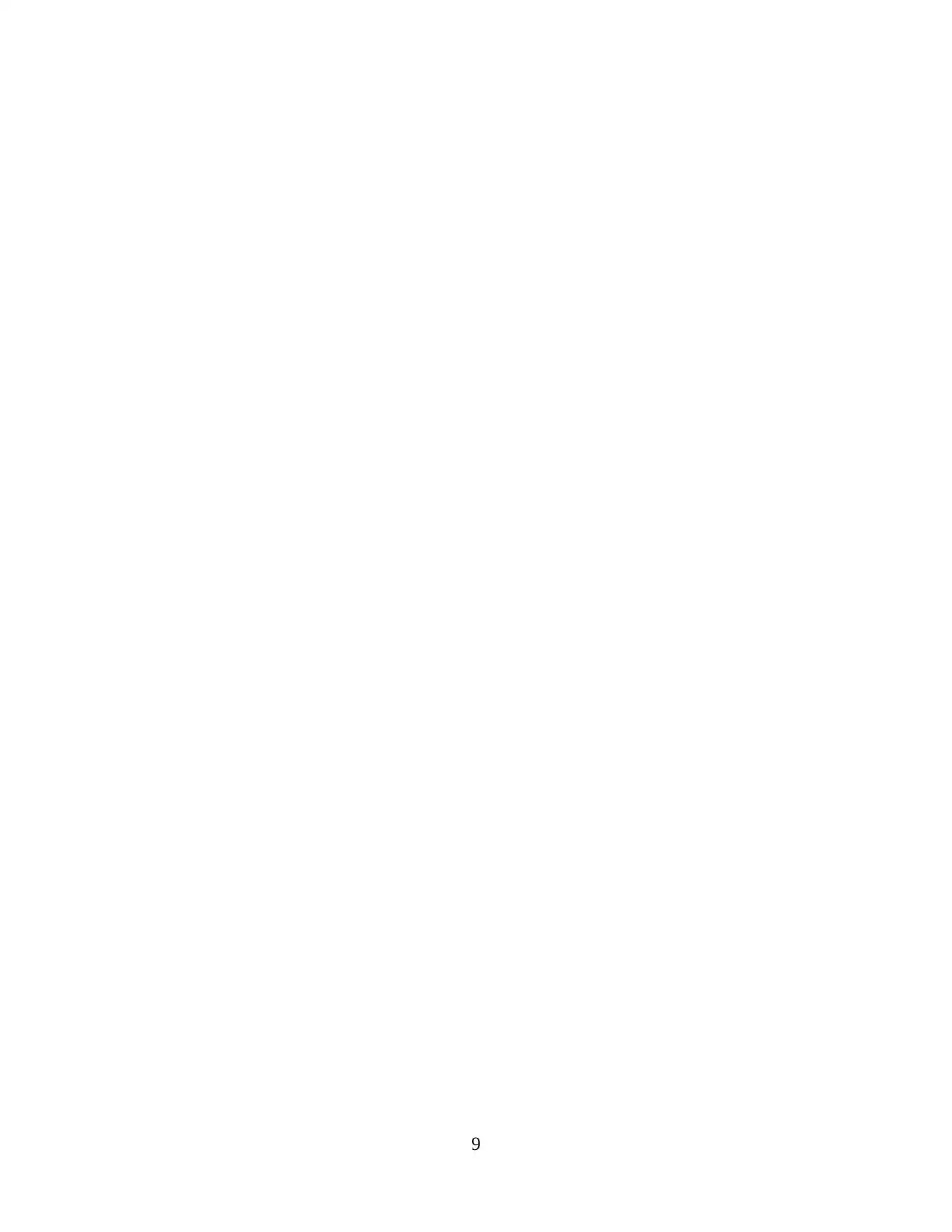
9
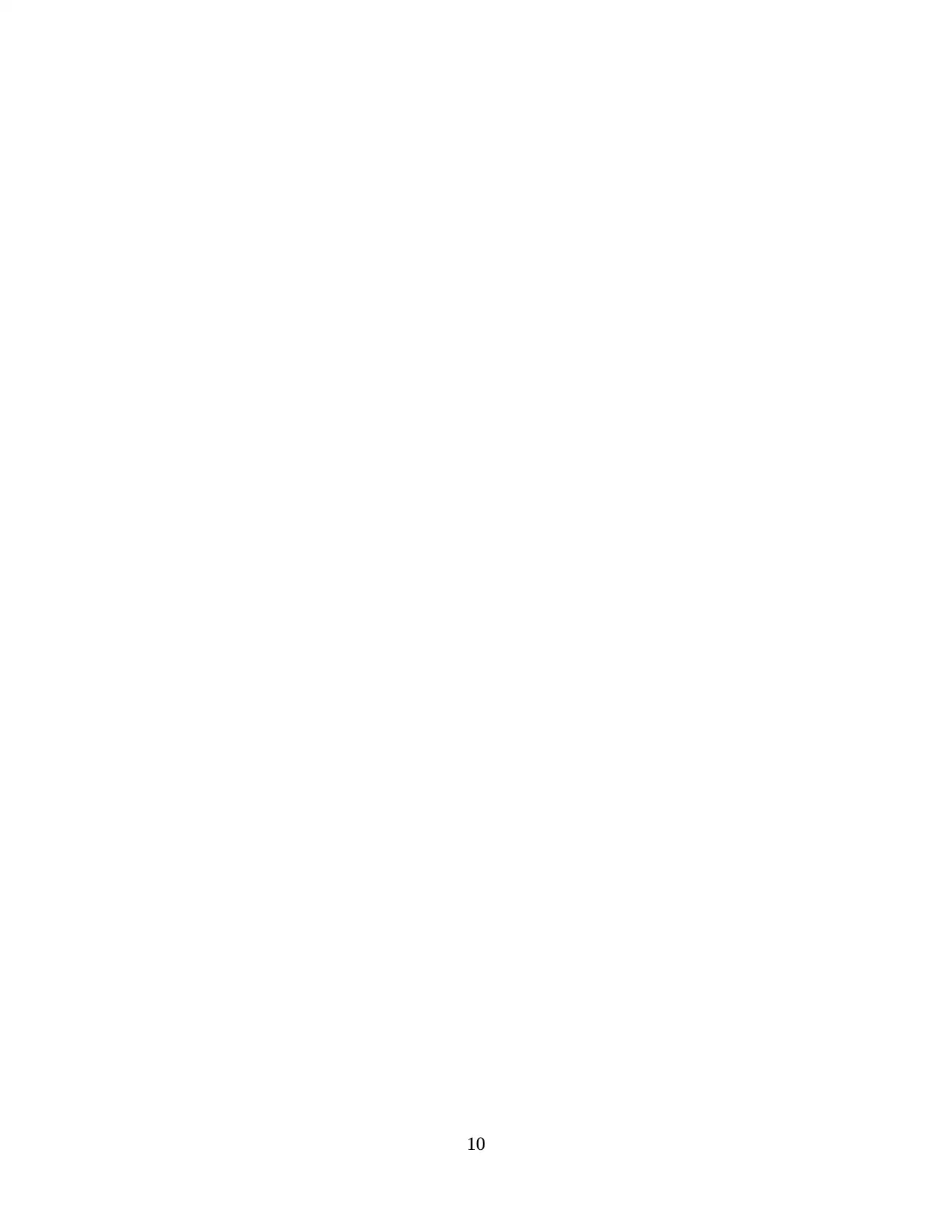
10
⊘ This is a preview!⊘
Do you want full access?
Subscribe today to unlock all pages.

Trusted by 1+ million students worldwide
1 out of 17
Related Documents
Your All-in-One AI-Powered Toolkit for Academic Success.
+13062052269
info@desklib.com
Available 24*7 on WhatsApp / Email
![[object Object]](/_next/static/media/star-bottom.7253800d.svg)
Unlock your academic potential
Copyright © 2020–2025 A2Z Services. All Rights Reserved. Developed and managed by ZUCOL.





